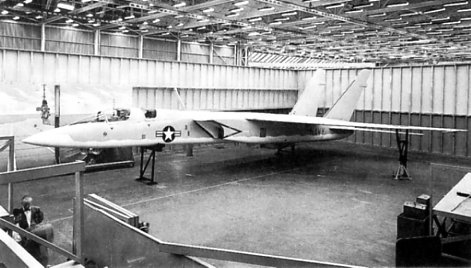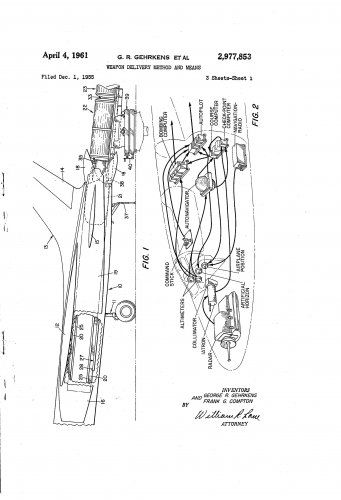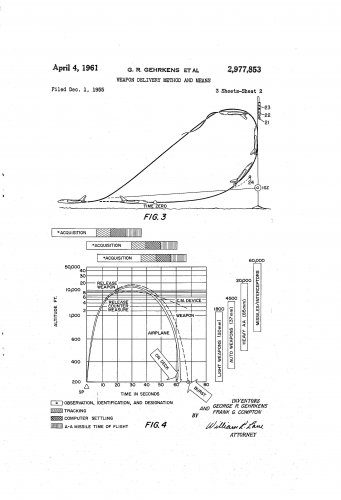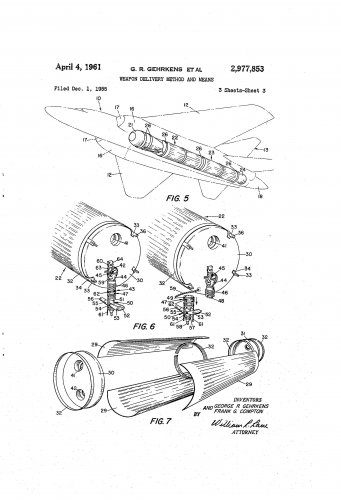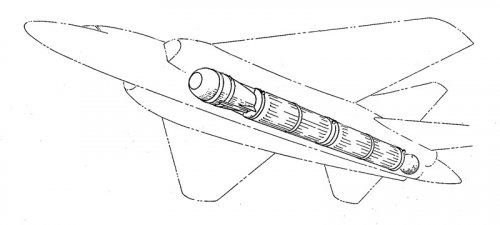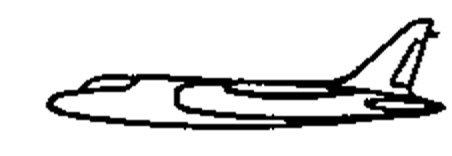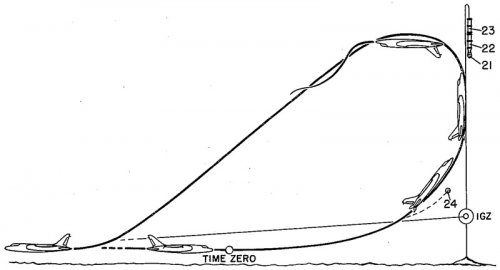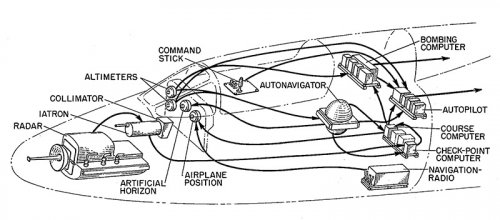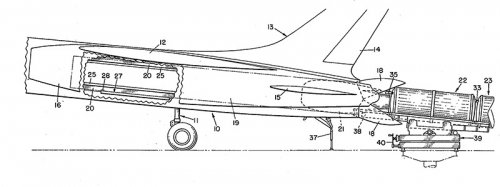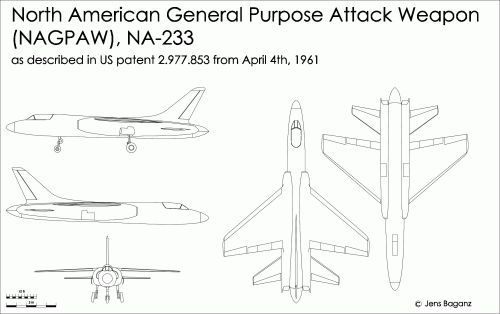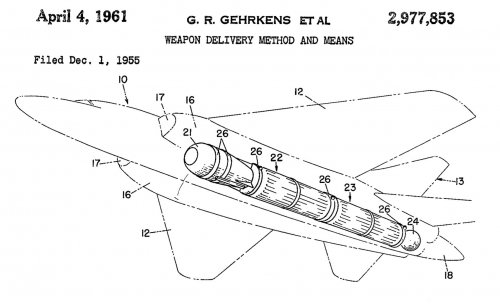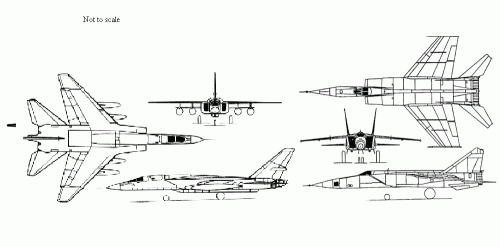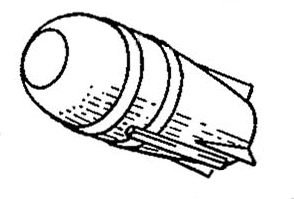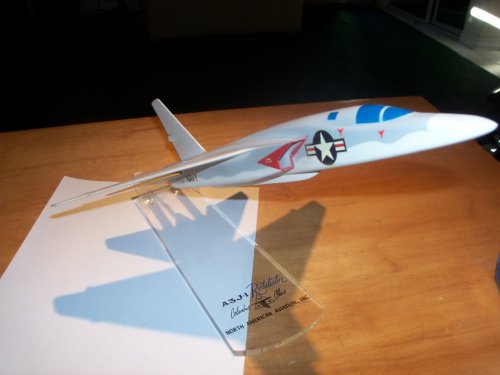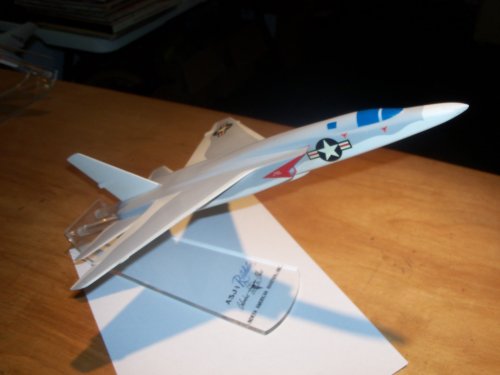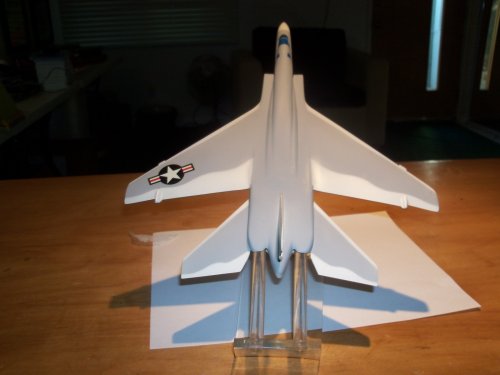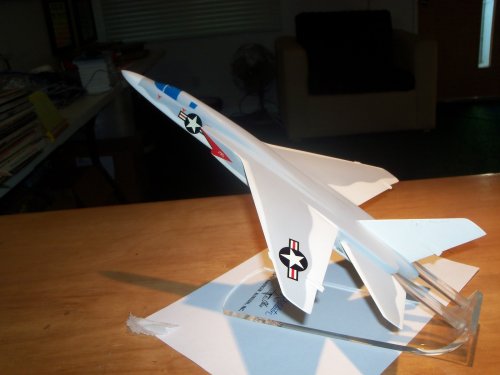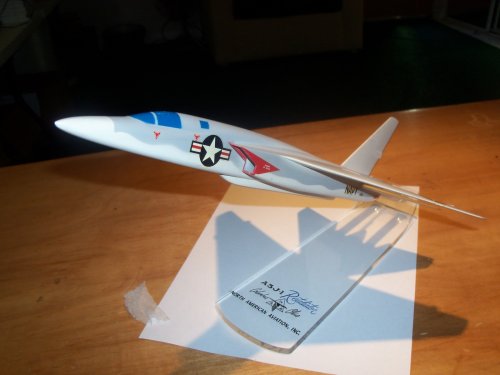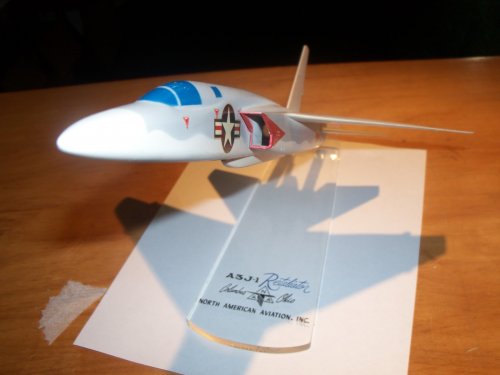- Joined
- 21 May 2006
- Messages
- 2,701
- Reaction score
- 1,601
Hello gents
I am looking to find some information on possibly one of the most advanced and powerful strike aircraft designed for its time, and yet possibly one of the least known and un-utilised designs in military aviation history –
The design I am speaking of is the North American A3J (A-5) Vigilante supersonic, carrier-based nuclear strike-bomber.
But saying this, the design that I am most interested in though, is the original project with the name ‘North American General Purpose Attack Weapon’ (NAGPAW), that the A3J (A-5) would be developed from.
Unlike the A3J (A-5) Vigilante, the NAGPAW was a privately-funded design project by North American Aviation, for a carrier-based aircraft that would be a more capable platform for the delivery of a nuclear weapon than the Douglas A3D Skywarrior. The company gave its project the internal name of North American General Purpose Attack Weapon (NAGPAW). The aircraft was to be capable of delivering a nuclear weapon at speeds of up to Mach 2. In 1954, the NAGPAW was offered to the Navy in an unsolicited proposal.
The Navy was suitably impressed, but added some conditions. The original NAGPAW proposal called for a low-altitude penetrator which dictated an aircraft with a small wing area with a high loading to give an acceptable low-altitude ride at high speeds. However, the Navy wanted the aircraft to have the ability to launch from a carrier even in a (ridicules) zero wind conditions, which requires a larger wing area, for it had decided that it would be a better idea to abandon the low-altitude penetrator mission in favour of better carrier landing and takeoff characteristics. Consequently, in January of 1955, the Navy changed the requirements, making a high-altitude Mach 2 dash capability primary and a low-altitude penetration capability only secondary.
The original NAGPAW design had twin vertical stabilizers, and this was actually how the mock-up was configured when it was reviewed in March of 1956. However this was changed to a single vertical stabilizer shortly thereafter (the USN getting cold feet with this revolutionary design idea of smaller twin-vertical stabilizers). The vertical tail was sufficiently tall that it had to be fitted with a hinge so that the top could be folded to the left for stowage aboard aircraft carriers.
Its primary offensive weapon, the Mk 28 IN nuclear weapon stored in an internal weapons bay. The weapons bay did not have a conventional bomb bay with doors opening underneath the bottom of the aircraft, since this would make it impossible to release the weapon at supersonic speeds. Instead, the was mounted at the end of a long duct which extended rearward between the two engines and was ejected to the rear during release.
Saying this does anyone have anything on the original NAGPAW design in the way of Pictures, drawing, 3-view drawing, artwork and specifications?
I think the original NAGPAW if developed in its original form could have been a very effective aircraft. It could even have been viable as an aircraft for the USAF, as a replacement for the English Electric / Martin Canberra and the Douglas B-66 Destroyer!
I am still a big fan of the fact, that the Vigilante could also have been developed still further into a more versatile and conventional strike aircraft (both carrier-based and land-based), if its linear-bomb bay design had been replaced by a Martin-type rotary bomb bay arrangement (eg as used on the Martin B-57 Canberra, the Martin XB-51 and the Blackburn Buccaneer!), plus its four wing pylons to carry conventional bombs and missiles, it would have made for a cheaper F-111 or TSR.2 replacement i think!
Regards
Pioneer
I am looking to find some information on possibly one of the most advanced and powerful strike aircraft designed for its time, and yet possibly one of the least known and un-utilised designs in military aviation history –
The design I am speaking of is the North American A3J (A-5) Vigilante supersonic, carrier-based nuclear strike-bomber.
But saying this, the design that I am most interested in though, is the original project with the name ‘North American General Purpose Attack Weapon’ (NAGPAW), that the A3J (A-5) would be developed from.
Unlike the A3J (A-5) Vigilante, the NAGPAW was a privately-funded design project by North American Aviation, for a carrier-based aircraft that would be a more capable platform for the delivery of a nuclear weapon than the Douglas A3D Skywarrior. The company gave its project the internal name of North American General Purpose Attack Weapon (NAGPAW). The aircraft was to be capable of delivering a nuclear weapon at speeds of up to Mach 2. In 1954, the NAGPAW was offered to the Navy in an unsolicited proposal.
The Navy was suitably impressed, but added some conditions. The original NAGPAW proposal called for a low-altitude penetrator which dictated an aircraft with a small wing area with a high loading to give an acceptable low-altitude ride at high speeds. However, the Navy wanted the aircraft to have the ability to launch from a carrier even in a (ridicules) zero wind conditions, which requires a larger wing area, for it had decided that it would be a better idea to abandon the low-altitude penetrator mission in favour of better carrier landing and takeoff characteristics. Consequently, in January of 1955, the Navy changed the requirements, making a high-altitude Mach 2 dash capability primary and a low-altitude penetration capability only secondary.
The original NAGPAW design had twin vertical stabilizers, and this was actually how the mock-up was configured when it was reviewed in March of 1956. However this was changed to a single vertical stabilizer shortly thereafter (the USN getting cold feet with this revolutionary design idea of smaller twin-vertical stabilizers). The vertical tail was sufficiently tall that it had to be fitted with a hinge so that the top could be folded to the left for stowage aboard aircraft carriers.
Its primary offensive weapon, the Mk 28 IN nuclear weapon stored in an internal weapons bay. The weapons bay did not have a conventional bomb bay with doors opening underneath the bottom of the aircraft, since this would make it impossible to release the weapon at supersonic speeds. Instead, the was mounted at the end of a long duct which extended rearward between the two engines and was ejected to the rear during release.
Saying this does anyone have anything on the original NAGPAW design in the way of Pictures, drawing, 3-view drawing, artwork and specifications?
I think the original NAGPAW if developed in its original form could have been a very effective aircraft. It could even have been viable as an aircraft for the USAF, as a replacement for the English Electric / Martin Canberra and the Douglas B-66 Destroyer!
I am still a big fan of the fact, that the Vigilante could also have been developed still further into a more versatile and conventional strike aircraft (both carrier-based and land-based), if its linear-bomb bay design had been replaced by a Martin-type rotary bomb bay arrangement (eg as used on the Martin B-57 Canberra, the Martin XB-51 and the Blackburn Buccaneer!), plus its four wing pylons to carry conventional bombs and missiles, it would have made for a cheaper F-111 or TSR.2 replacement i think!
Regards
Pioneer

